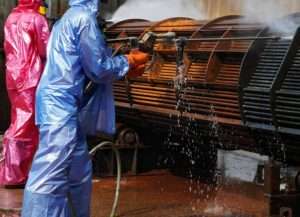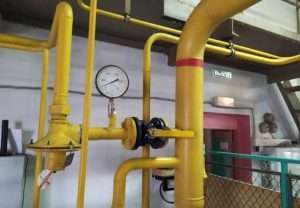Основы моей стратегии: анализ и терпение
Забудь о случайности! Научись торговать на Форексе с умом. Пошаговые руководства, анализ рынка и эффективные стратегии – твой путь к финансовой свободе. Начни прямо сейчас!
Торговля на Форексе – это захватывающее, но рискованное занятие. Многие новички теряют свои деньги из-за недостатка знаний и продуманной стратегии; Успех на Форексе зависит не от удачи, а от глубокого понимания рынка, умения анализировать графики и дисциплины. Правильно подобранная стратегия – ключ к долгосрочному успеху. На странице https://www.example.com вы найдете много полезной информации о торговле на Форексе, которая поможет вам в начале пути. Это лишь один из множества ресурсов, которые могут значительно улучшить ваши навыки.
Моя стратегия основана на сочетании технического и фундаментального анализа. Я не полагаюсь на сигналы от сомнительных источников, предпочитая самостоятельно проводить исследования и строить прогнозы. Это требует времени и усилий, но зато позволяет мне лучше понимать рынок и принимать взвешенные решения. Ключевым элементом моей стратегии является терпение. Я не спешу открывать сделки, дожидаясь подтверждения сигналов от нескольких источников. Поспешность – враг трейдера.
Технический анализ⁚ инструменты и индикаторы
В техническом анализе я использую несколько ключевых индикаторов, таких как скользящие средние, MACD и RSI. Однако я не слепо следую сигналам этих индикаторов. Я рассматриваю их как дополнительные инструменты, которые помогают мне подтвердить свои прогнозы, основанные на анализе графиков цен. Важно понимать, что каждый индикатор имеет свои особенности и ограничения, и их необходимо использовать комплексно.
Фундаментальный анализ⁚ макроэкономические факторы
Фундаментальный анализ играет важную роль в моей стратегии. Я слежу за новостями, связанными с экономикой, политикой и геополитическими событиями, которые могут повлиять на курсы валют. Знание этих факторов позволяет мне предвидеть возможные изменения на рынке и корректировать свою торговую стратегию. Понимание взаимосвязи между макроэкономическими показателями и валютными курсами критически важно для успешной торговли.
Управление рисками⁚ ключевой фактор успеха
Управление рисками – это неотъемлемая часть моей стратегии. Я всегда ставлю стоп-лоссы, чтобы ограничить потенциальные потери. Размер стоп-лосса определяется индивидуально для каждой сделки, в зависимости от волатильности рынка и моего риск-аппетита. Никогда не следует рисковать больше, чем вы можете себе позволить потерять.
- Строгое соблюдение правил управления рисками.
- Использование стоп-лоссов для ограничения убытков.
- Диверсификация портфеля для снижения рисков.
- Регулярный мониторинг открытых позиций.
Дисциплина и психологический аспект
Торговля на Форексе требует не только знаний, но и дисциплины. Я строго следую своей стратегии, не поддаваясь эмоциям и не изменяя план в зависимости от краткосрочных колебаний рынка. Психологический аспект играет важную роль в успехе трейдера. Важно уметь контролировать свои эмоции, избегать излишней жадности и страха.
На странице https://www.example.com вы найдете дополнительные материалы о психологии трейдинга.
Пример моей торговой сделки
Давайте рассмотрим пример. Я заметил на графике EUR/USD формирование бычьего паттерна «голова и плечи». Подтверждением послужили сигналы индикаторов MACD и RSI. После прорыва линии шеи я открыл длинную позицию с установленным стоп-лоссом ниже уровня поддержки. Тейк-профит был установлен на уровне предполагаемого сопротивления.
Развитие и адаптация стратегии
Моя стратегия не является статичной. Я постоянно анализирую свои результаты, изучаю новые методы и индикаторы, адаптируя свою стратегию под меняющиеся условия рынка. Учиться нужно постоянно, чтобы оставаться конкурентоспособным в этой динамичной сфере.
- Регулярный анализ торговых результатов.
- Постоянное обучение и изучение новых методов.
- Адаптация стратегии к изменяющимся условиям рынка.
- Ведение торгового дневника для отслеживания результатов.
Моя стратегия на Форексе – это результат многолетнего опыта, постоянного обучения и самосовершенствования. Она не гарантирует 100% прибыли, но значительно повышает шансы на успех при условии строгого соблюдения всех правил и дисциплины. Помните, что Форекс – это высокорисковый рынок, и успех требует времени, терпения и постоянной работы над собой. Не забывайте о важности управления рисками. На странице https://www.example.com вы найдете еще больше полезных сведений. Успешная торговля на Форексе – это марафон, а не спринт.
Описание⁚ Эта статья описывает мою лучшую стратегию на Форексе, позволяющую достичь стабильной прибыли. Узнайте секреты успешной торговли!






